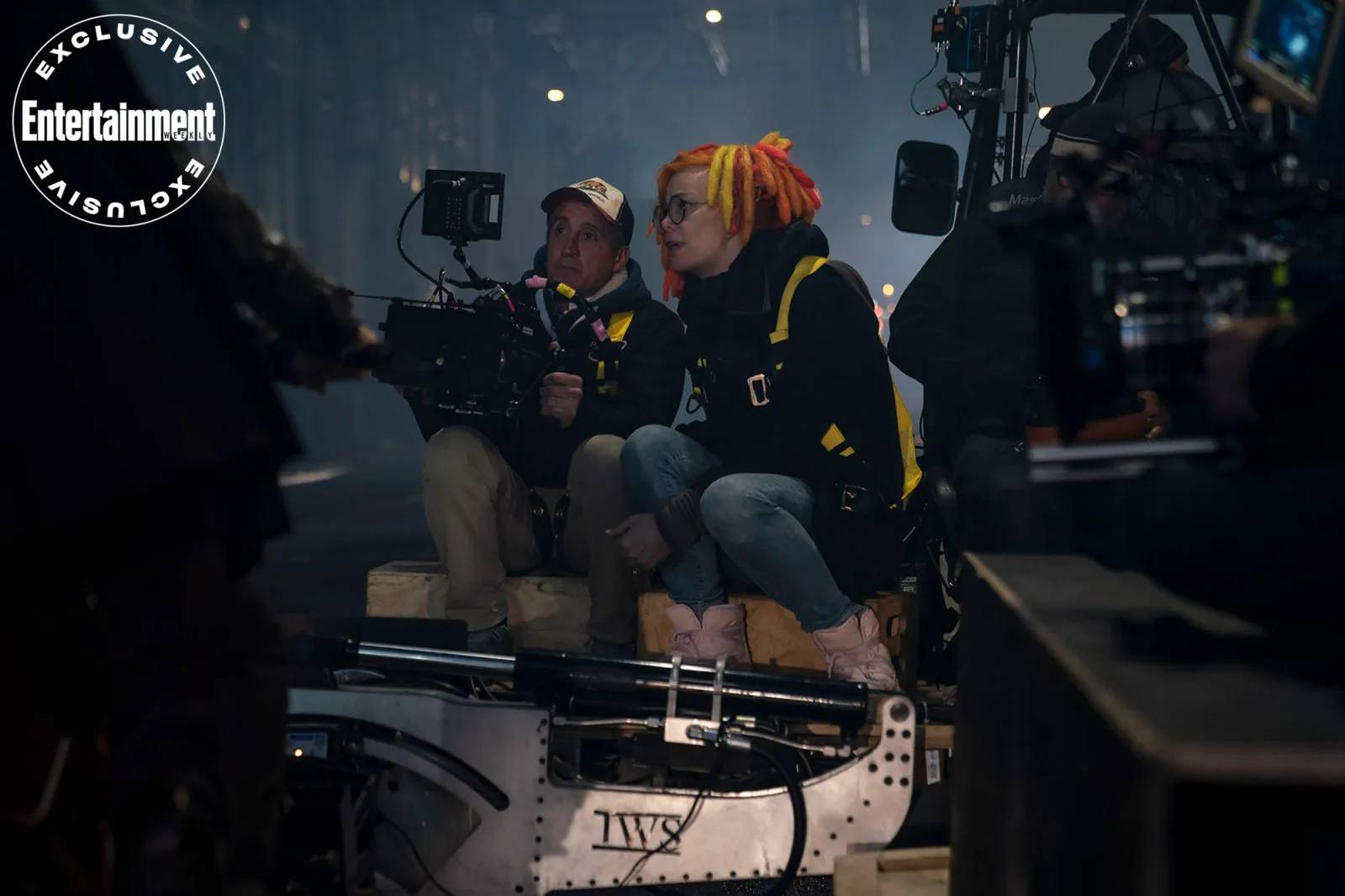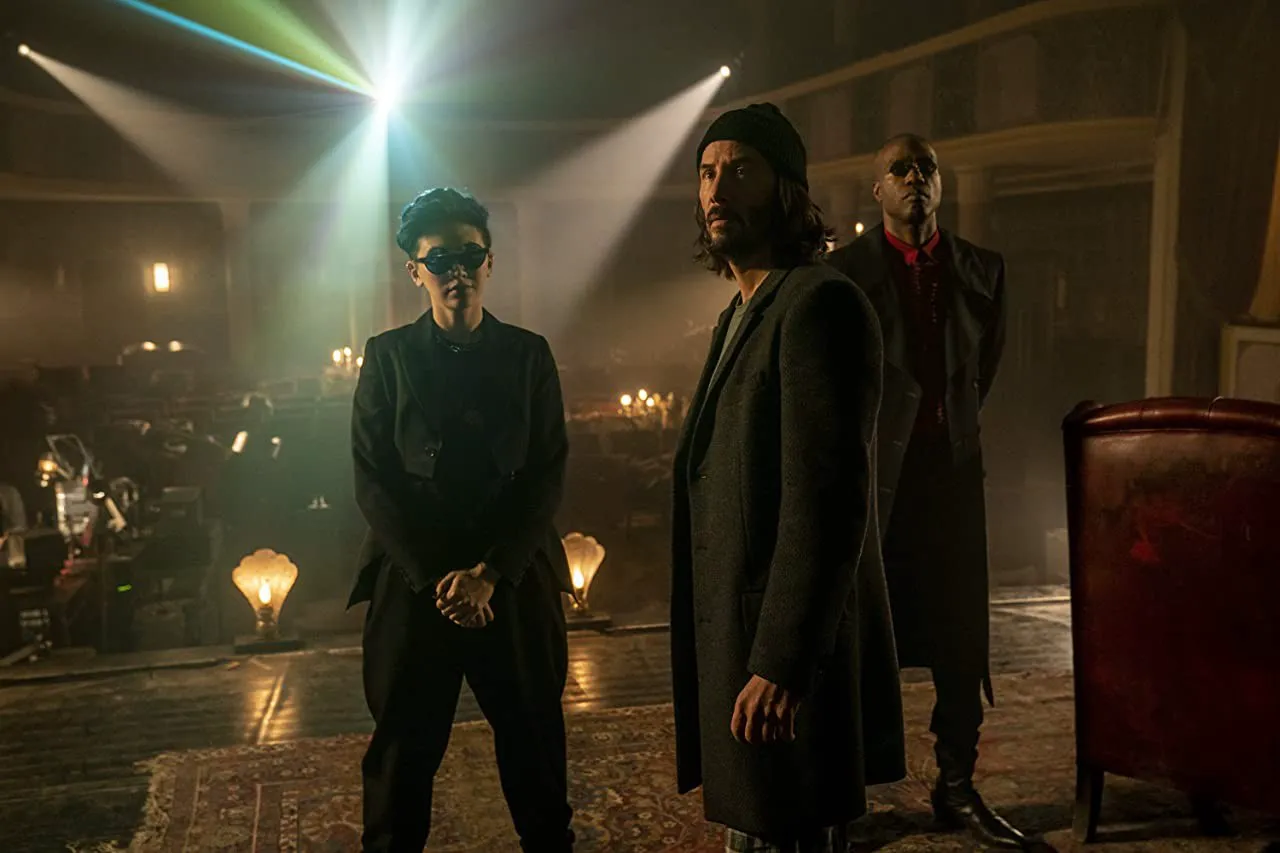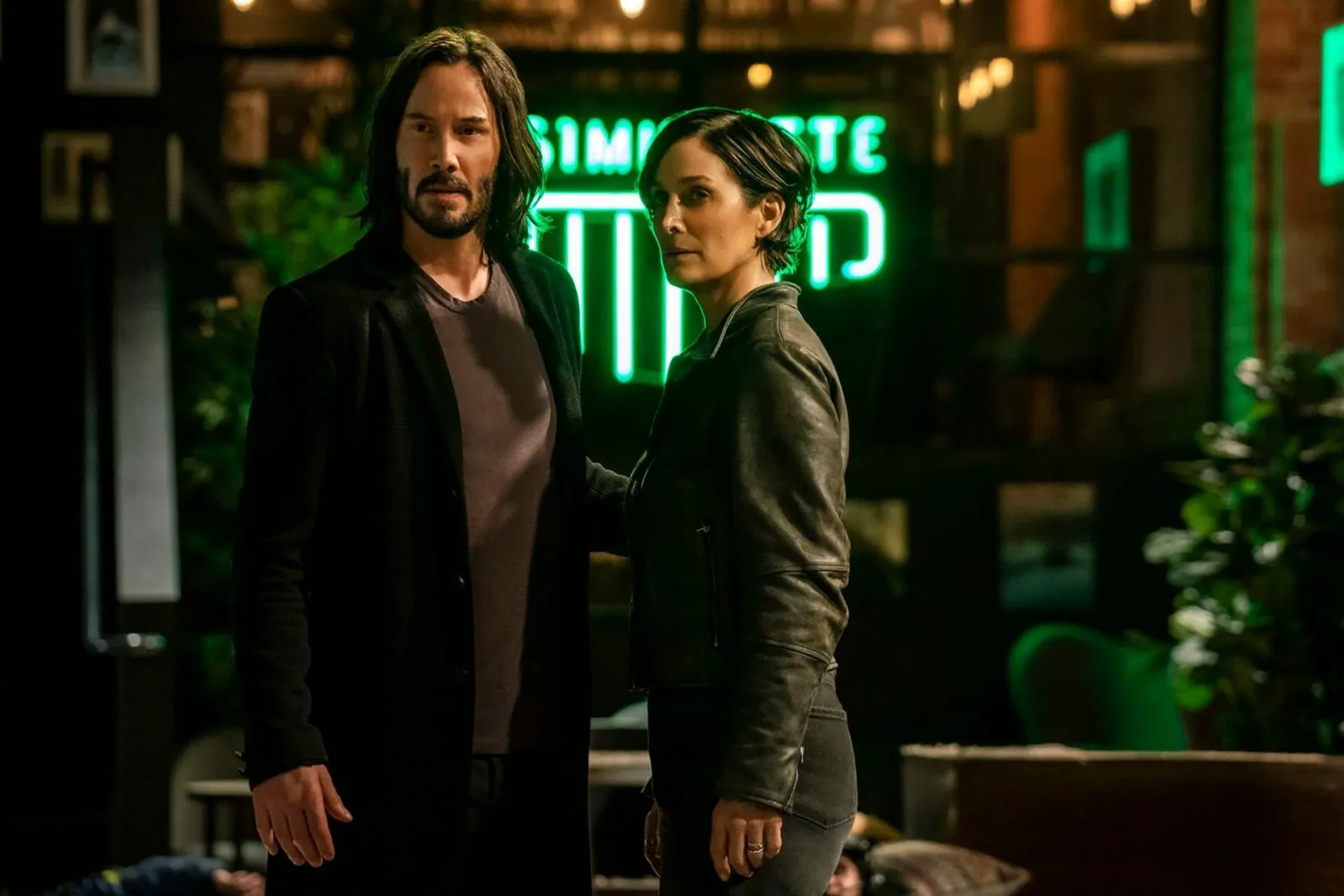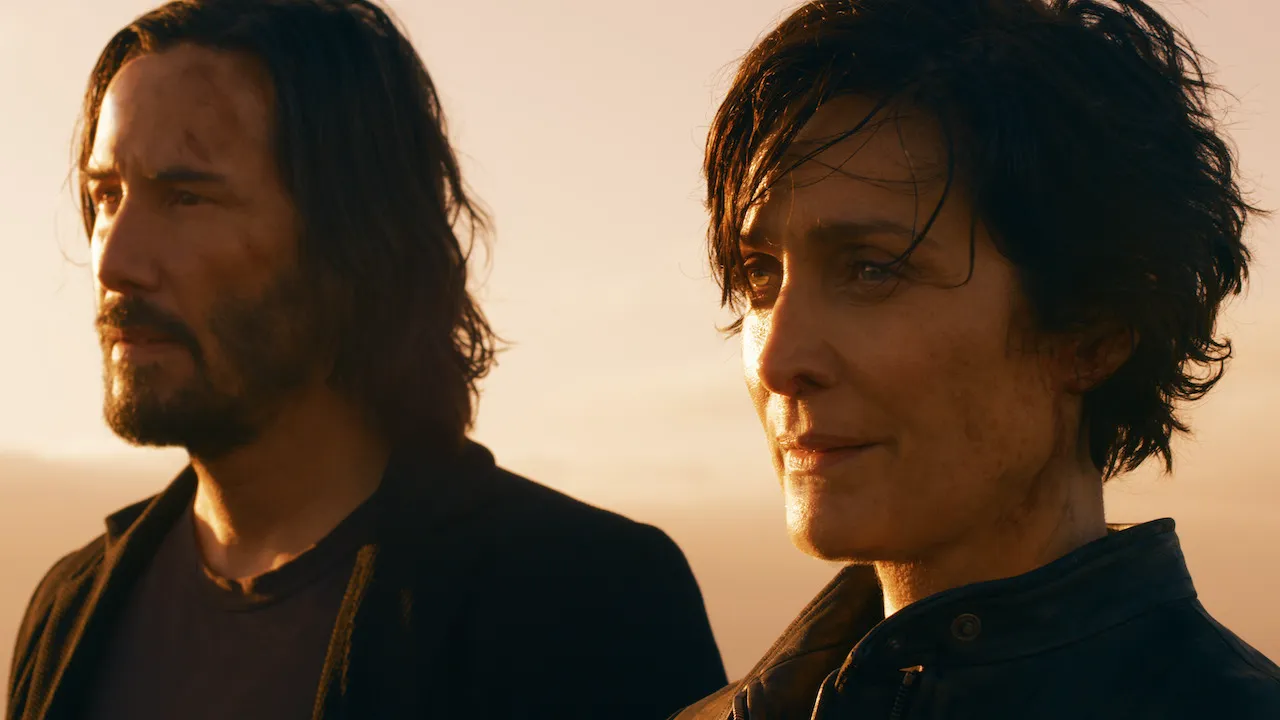Neo/Thomas Anderson (Keanu Reeves) is having a midlife crisis. He’s bored with his work in game design and takes blue pills by the handful instead of the consciousness-liberating red ones. He regularly sees a woman in a coffee shop who reminds him of the love of his life, Trinity (Carrie-Anne Moss). The true reality gradually slips away from him until a chain of mysterious events forces Neo to return to the Matrix and remind himself and those around him that he is the Chosen One.

Lana Wachowski on the set of “The Matrix Resurrections”
“Love is the foundation of everything,” concludes Lana Wachowski, the creator of “Resurrections,” as the green credits roll. This time, she returned to directing and the story alone: her sister Lilly was having too much trouble dealing with the loss of their parents and didn’t dare distract herself with familiar characters after many years of absence. Lana, on the other hand, sought an elixir of healing in escapism and a return to her roots. The franchise, which has long been etched in history and left a huge cinematic legacy, has always led to love—a banal, necessary, unattainable concept—unlocking all sorts of doors with this rusty key. Behind the burden of multiple universes, layers of terms and codes loaded into the cerebral cortex, Baudrillardian philosophy, the white rabbit, kung fu, bullet time, and other paraphernalia, there was always a connection between two people dreaming of a reunion that they were once deprived of (the 2003 threequel “Revolutions” ends with the death/disappearance of both heroes).

Keanu Reeves as Neo in a still from “The Matrix Resurrections”
The fourth “Matrix” not only gives the heroes the opportunity to reunite but also gives a rare sense of belonging on today’s screens—including to a story that last appeared on screens 18 years ago. During this time, a generation has formed that learned about black cloaks and latex exclusively from TikTok and didn’t go into the details of the plot (and indeed, there was no need). But catching all the previous details doesn’t seem like an essential or important element of the picture—all roads in any of the scenarios will intersect, the parts in disassembled form will methodically flash as flashbacks, and everything will remind you again of the illusion of choice, which has long been made either by us or for us.

Carrie-Anne Moss as Trinity in a still from “The Matrix Resurrections”
Since 1999, Neo and Trinity have decided to be together, and no current, even all-powerful, (psycho)analysts (Neil Patrick Harris) with architects, outraged critics, bosses, and new versions of Agent Smith will be able to stop them from implementing this wild plan that violates all the laws of physics and logic. Wachowski, who built the later period of her work on large-scale fairy-tale worlds, where the interconnectedness of people, their feelings, and actions always remained the main thing (“Cloud Atlas,” the series “Sense8”), refuses to play by other rules. “Resurrections” connects to the main romantic story that arose at the turn of the century in every possible way, not disdaining outrageous (and only true) sentimentality with nostalgia.
Nostalgia as a Narrative Force
This same nostalgia is transformed in a surprising way into a separate, independent script force (Lana wrote the text together with the authors of “Atlas” and “Sense8,” David Mitchell and Alexander Hemon). The film shows a healthy and even bold self-deprecating humor for the current unstable film business, ridiculing corporate culture and the evils of capitalism (while quite consciously being a part of it). “The Matrix” knows and accepts itself well enough as an object of franchise parasitism and fan service, continued to maintain the stability and comfort of the audience as the same blue pills that viewers are ready to swallow by the handful, hastily escaping from wars, feasts, and the plague. Wachowski places the characters in the same inextricably comfortable simulation: you can visit the Simulatte coffee shop and exchange glances with a stranger, you can be bored in the bathroom with a duckling on your head, discuss with colleagues the plan to create a new game, and fall from exhaustion on the treadmill. You can get out of the slime, complete what you started, embellish the story with a happy ending, which also serves as a very valid panacea.

Lana Wachowski on the set of “The Matrix Resurrections”
Keanu Reeves and Carrie-Anne Moss gently and organically play their 50s, fully accepting them, making wrinkles a common human heritage that is no longer shameful (they both look amazing). The accompaniment is provided by an advanced hologram replacing Morpheus, performed by Yahya Abdul-Mateen II (Doctor Manhattan in “Watchmen”), the local supplier of gags and incomparable costumes, the annoying Neil Patrick Harris with a cat named Deja Vu, and the sinister Jonathan Groff, who has opened a new breath (not Hugo Weaving, but a separate demonic entity).
Visually, “Resurrections” has advanced much further than its predecessors, still sharing with them a common, multiverse enthusiasm and creativity. “We will definitely add a rainbow to the sky,” Trinity promises in the epilogue to all the deliberately outraged fighters against the “agenda.” Wachowski can be considered naive and didactically minded, but with this obligation and seemingly outdated optimism, she heals her own wounds, defuses amnesiac trauma bombs, and transfers universal consciousness to a secluded, free space before the inevitable apocalypse. It remains to nourish and free the mind, listen to Jefferson Airplane, and return to where we came from—back to the Matrix.